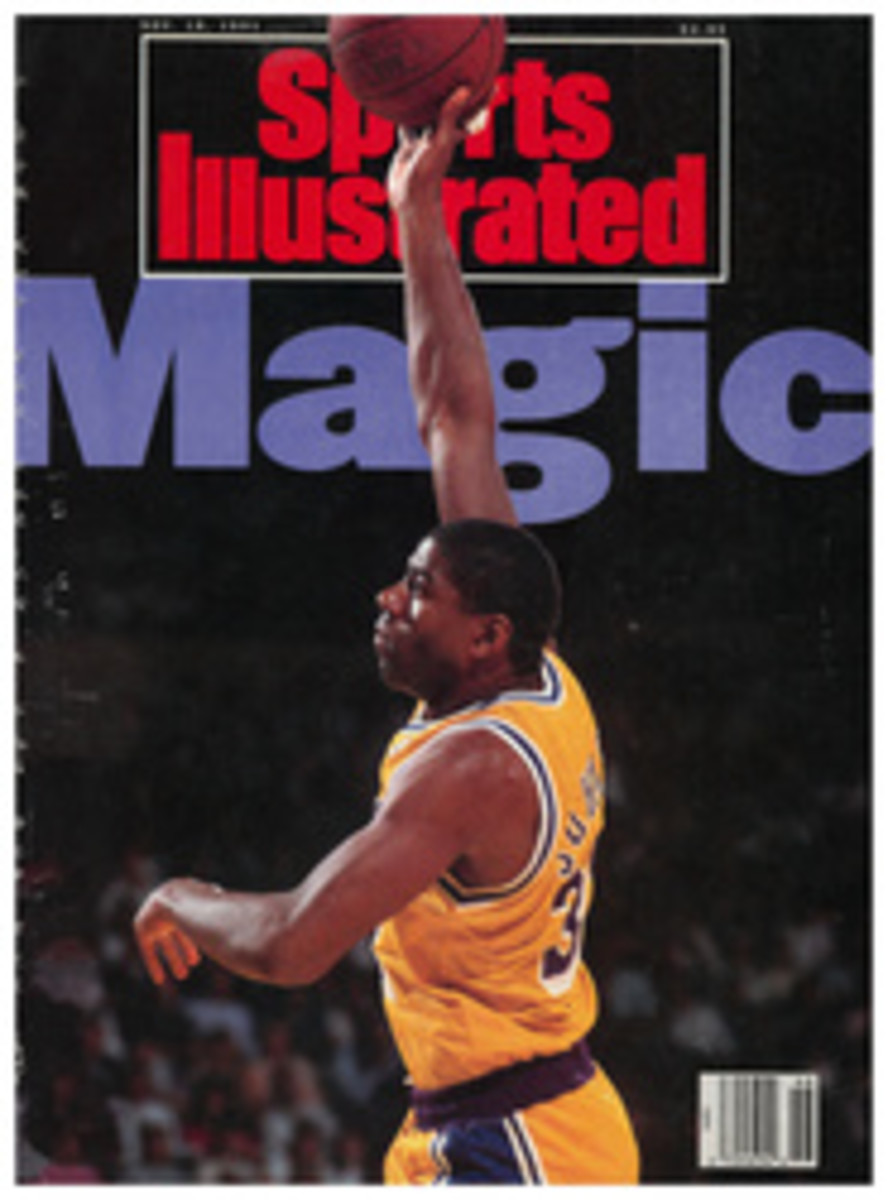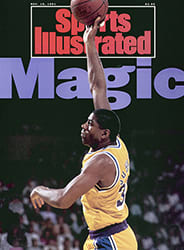
A Most Colorful Calling
Louie Olah doesn't see the world as black and white. He sees it as the devil's red and blue hooped sleeves of legendary Calumet Farm. The dark gray and yellow braid of Rokeby Stable. And the royal blue and white checks of Meadow Stable, the colors Secretariat wore to victory.
These and 3,800 other jockey silks line the walls of a room far below the grandstand of New York's Belmont Park. From three rows of hooks hang billowing jackets, the vivid brushstrokes of horse racing history. Clutching a list of the next day's entries in the 1990 Breeders' Cup, Olah scans the room he has supervised for 25 years and wonders which of the silks will be ridden into the record books.
The 4'8" Olah, 63, dips between the rows of hooks, pulling silks that will be worn by the world's leading jockeys. He disappears amid a whirl of nylon and emerges minutes later with an armload of brilliant colors. Olah's search is periodically interrupted as chauffeurs and stable hands appear to deliver silks from Japan, Europe and Canada; more arrive from California, Maryland and Florida. Bundles for each of the seven championship races in the Breeders' Cup begin to form on the floor.
Olah is the track's color man, and his job is to remember. When Angel Cordero Jr. is tapped to ride for Ogden Phipps; it's up to Olah to pluck a black jacket and a cherry red cap from the thousands of silks in his collection.
Nearly 25,000 silks were registered last year in New York. Owners must select their "colors" (as the silks are known in racetrack parlance) from 29 available designs and 154 color combinations; no two sets are alike. Cap and sleeve designs also must conform to certain specifications. According to the Jockey Club, the organization that registers the colors, there are more than five million possible combinations, enough to daunt even the most accomplished trifecta player.
Keeping that much information straight would be easier if one used a computer, but most color men reject the idea, preferring to rely on their own megabyte memories. Few even use written notes.
In the accents of a man who has spent most of his life in Queens, N.Y., Olah, an ex-jockey, says he won't be replaced by a computer anytime soon. "Oh, they've talked about putting one in, but I know everything that's in this room," he says. "Maybe somebody could punch in the owner's name or horse's name or whatever, and up would come the colors, but he still wouldn't know what he was looking for." A horse's ownership changes frequently, either through claiming races or private sales, and any computer system would have to be updated almost on a daily basis.
"Louie's got amazing recall," says Tony Pellegrino, who oversees the jocks' room at Belmont and at Aqueduct and Saratoga, where Olah works as well. "Even if an owner hasn't raced here in years, he can just walk right in and pick out his colors, no problem."
"There's no system that can make the color room any easier for the man who's running it," says Frank Smothers, the dean emeritus of color men. For 28 years Smothers presided over 4,000 silks at Santa Anita, Del Mar and Hollywood Park in California. He retired in April 1990.
"You couldn't even use a file system in there," he says. "It takes too much time to flip a page or poke those numbers. It's one man, one memory."
Tracks with smaller collections of silks use a conveyor system similar to that used by dry cleaners, often with the owner's name printed above each hook.
"I don't like that kind of a system, either," says Smothers. "If I gotta stand in one spot looking for hook number 222, and I gotta wait for that thing to run around to me, it would be a waste of time. It would take a man all day long to get the colors down and hang them all back up."
Olah agrees. "That would never work here in New York, 'cause I got too many silks," he says. "They'd have to put two or three conveyor belts in. There's barely enough room in here as it is now."
He points to his eight aisles of silks, each organized according to the jacket's most dominant color. Blue is the choice of most owners, he notes, while gray and brown are among the least popular colors. Most owners supply two or three sets of colors; the bigger and more successful stables might have as many as six sets each.
Every color man comes up with his own method for storing the silks, and like a proud parent, each claims that his brainchild is the best.
"I think I had the best system in America," boasts Smothers, "and I've had Bill Shoemaker and Chris McCarron and just about every top rider in the country tell me that." Smothers's method was based on caste rather than color: top trainers like D. Wayne Lukas and Charlie Whittingham on one side of the room, wannabes on the other.
But while systems may vary from track to track, the color man's routine is essentially the same. Using a mockup of the next day's racing program—known in track parlance as "the proofs"—he completes a daily jigsaw puzzle, selecting colors that match a particular owner and horse. Later, the silks are hung on a large rack according to race numbers and post positions. As jockeys return to the dressing room, the color man washes and dries the silks—often 100 each day—and restores them to the proper spots.
When a particular set is missing, the color man may approximate its pattern using another owner's colors. Here, years of experience come in handy in deciding which owners will excuse the occasional substitution. Other times, the color man will use generic-brand silks owned by each racetrack. Either way, the result is often a bruised ego, for the owner or for the color man.
"Louie hates to run subs," says Pellegrino. "He feels it reflects badly on him, like he couldn't find the owner's colors or something. He really takes it personally."
"Everyone can tell when my father's gone on vacation, because they use a lot of subs," said Olah's daughter, Donna, who works at Belmont, Aqueduct and Saratoga as a pari-mutuel clerk.
Minutes before post time for last year's Breeders' Cup Distaff, Louie was frantically searching for the burgundy and silver colors of Frank E. Whitham, owner of defending champ Bayakoa. Whitham does most of his racing in California, and his silks hadn't arrived at Belmont. With no time to spare, Olah instinctively handed a set of subs to Bayakoa's jockey, Laffit Pincay Jr. He was soon photographed carrying Belmont's own nondescript gray and white colors to victory past the doomed filly Go for Wand, who shattered her right foreleg a little more than 100 yards from the finish line.
In his 22 years as a jockey, Olah saw his share of mishaps. One April afternoon in 1952, while riding at Lincoln Downs in Rhode Island, he glanced over his shoulder at 16-year-old apprentice Tony DeSpirito, whose saddle had slipped beneath his horse's belly. DeSpirito was caught in a tangle of iron and leather. Quickly, Olah steered his mount alongside the stricken rider and grasped him, holding fast until the youngster regained his balance. They crossed the wire inches apart, DeSpirito finishing sixth, Olah seventh and last.
That day Olah was acclaimed as a hero, but it was DeSpirito who rode on to greater glory, setting an American record for races won in a single year (390 in 1952). Olah was less successful, picking up mounts at small tracks along the East Coast until injuries forced him to retire in 1967. Soon afterward, he accepted the job of color man, taking care of many of the silks in which he had competed.
In a quiet moment at the end of a busy afternoon, Olah pulls down a blue and white checked jacket with striped sleeves, and he reminisces. "These are the colors Ron Turcotte used when he rode Secretariat. He had such broad shoulders, sometimes he'd slit open the armholes just so he could ride the horse right."
Asked which colors in his collection are the oldest, Olah zips down a red aisle and without hesitation unearths a solid scarlet jacket and cap. "Mrs. John A. Morris," he says, smoothing the wrinkles. "Registered back in 1894. She took them over after her husband died."
And the most outlandish? "Jack Klugman's," he says, locating the actor's silks. The powder blue jacket is emblazoned with a man in a large sombrero taking a siesta, his chin resting on his knees.
"The Jockey Club won't let him run here in these colors," he says. "They have kind of a rule about tasteful-ness of the design. I keep it around for laughs."
Olah may have more in common with Klugman than the silks. Around the house he's more Oscar Madison than Felix Unger, according to his wife of 42 years, Clare.
"His closet? Forget it," Clare sighs. "He never throws anything away. And if I send him to the store for something, he never gets it right. He must only remember things when he's at work."
It's apparently not a job these men bring home with them.
"My wife won't let me near our washing machine," Smothers says. "She hates the way I do the colors."
PHOTO
JEFFREY LOWE
Olah organizes his array of silks according to dominant colors.
PHOTO
JEFFREY LOWE
Smothers claims a color man's job is essentially "one man, one memory."
Patti Dietz Davis is a free-lance writer who specializes in articles about thoroughbred racing.

